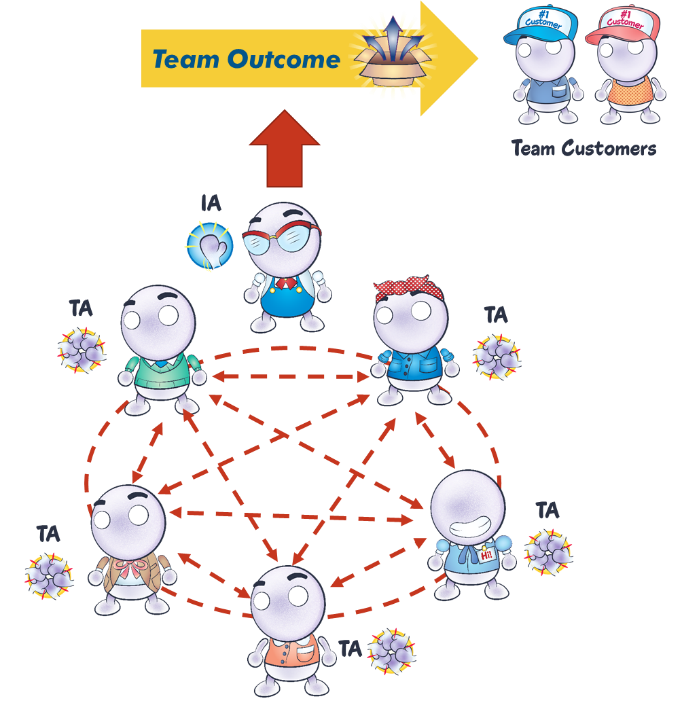Matrix Management Wiki
Home » The Accountability Key » 2G. Team Accountability
- 2G1. Team accountability is the commitment by members of a team to produce the agreed upon team outcomes.
- 2G2. Teams must produce outcomes effectively and efficiently.
- 2G2i. Effectiveness is created by delivering value to the customer across the horizontal delivery chain.
- 2G2ii. Efficiency is created by removing gaps between people and groups and eliminating process waste.
- 2G3. The team leader negotiates outcomes for the team.
- 2G4. Team accountability is shared by every member of a team except the team leader (who has individual accountability for the team’s outcome).
- 2G4i. The sharing of team accountability requires team members to cooperate in order to successfully achieve the team’s outcomes.
- 2G5. Figure 2.8. Team Accountability.

- 2G6. Purpose of Team Accountability:
- 2G6i. To create collaboration and cooperation between a team leader and team members, and between team members.
- 2G7. Principle of Team Accountability:
- 2G7i. Principle #1: Team accountability is shared by all members of the team.
- 2G7ia. Team accountability puts every member of a team on the hook for the larger team outcome (goal or deliverable). To be successful, the team must cooperate in order to deliver the outcome.
- 2G7ib. By having everyone on the team focused on the team outcome, the larger system, (the team) is optimized over the individual.
- 2G8. Rules of Team Accountability:
- 2G8i. Rule #1: Within the team, team accountability takes precedence over individual accountability.
- 2G8ii. Rule #2: Teams must first deliver value and then deliver efficiency.
- 2G8iii. Rule #3: The individual accountability of the leader overlaps with team accountability of the team members. (See Section 2H on Individual Accountability.)
- 2G8iv. Rule #4: When there is a conflict between accountabilities, the accountability for higher priority goals take precedence over the accountability for lower priority goals.
- 2G9. Individual Accountability
- 2G10. The definition of individual accountability is almost exactly the same as the definition of team accountability, except it’s about individual outcomes instead of team outcomes.
- 2G11. Figure 2.9. Individual Accountability.
- 2G12. Principles of Individual Accountability:
- 2G12i. Principle #1: There needs to be someone with individual accountability for every segment (whole) and every element (part) within the organization.
- 2G12ii. Principle #2: Individuals must produce outcomes effectively and efficiently.
- 2G13. Rules of Individual Accountability:
- 2G13i. Rule #1: Individuals must first deliver value and then deliver efficiency.
- 2G13ii. Rule #2: Individual accountability is not shared. No two people should have individual accountability for the same outcome.
- 2G13iii. Rule #3: Individual accountability does not mean an individual achieves a goal or produces a deliverable by himself. It means that the individual is ensuring the deliverable or goal is achieved.

